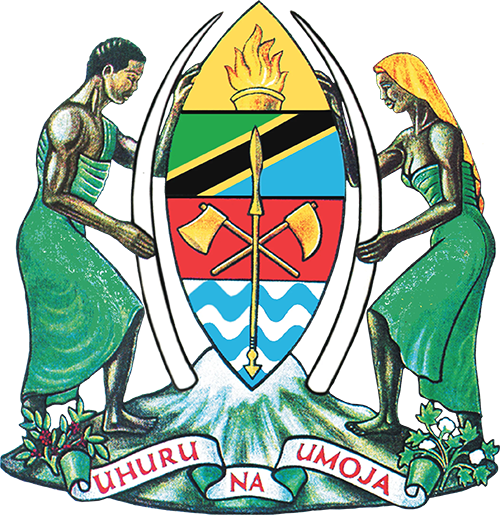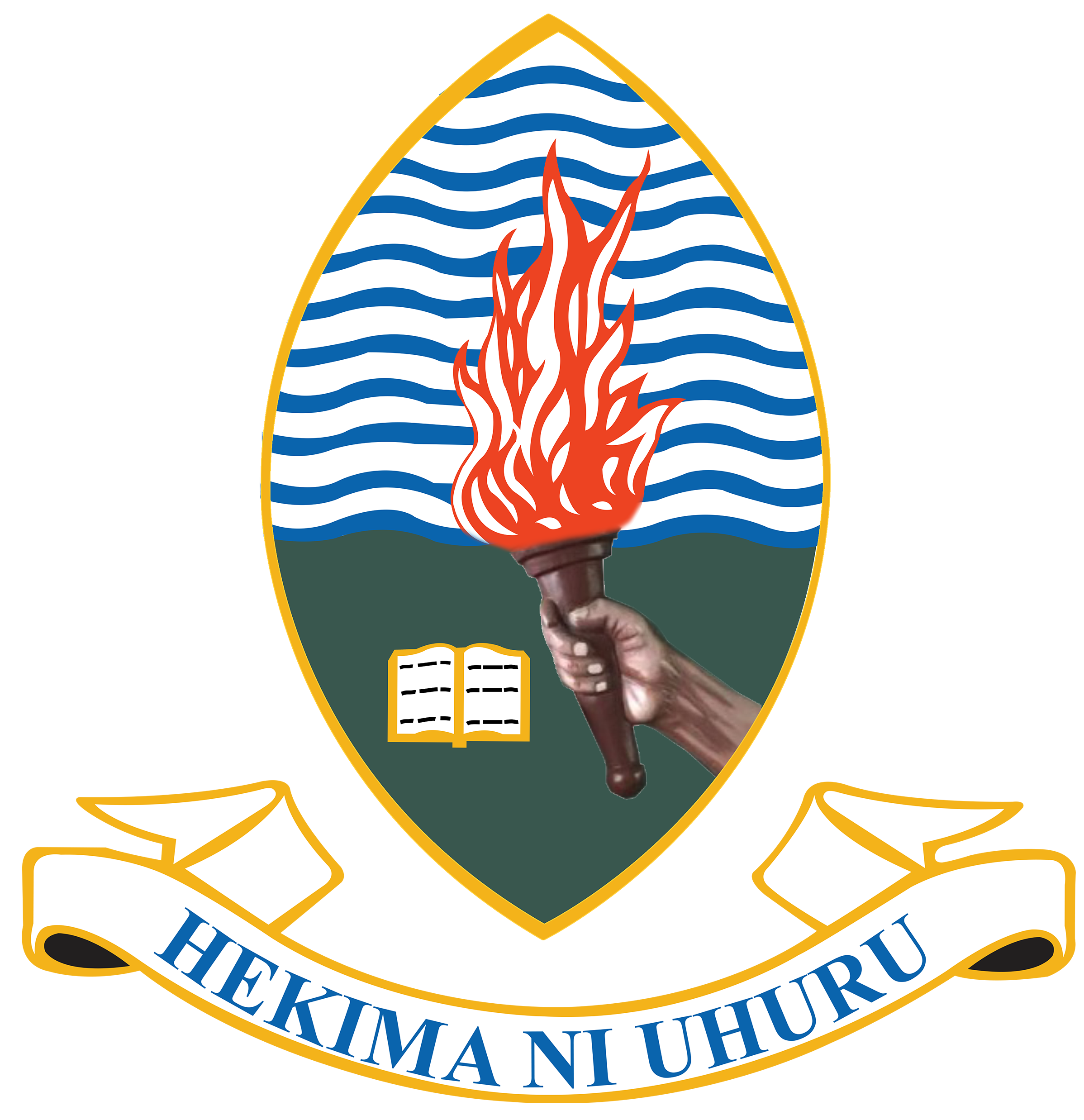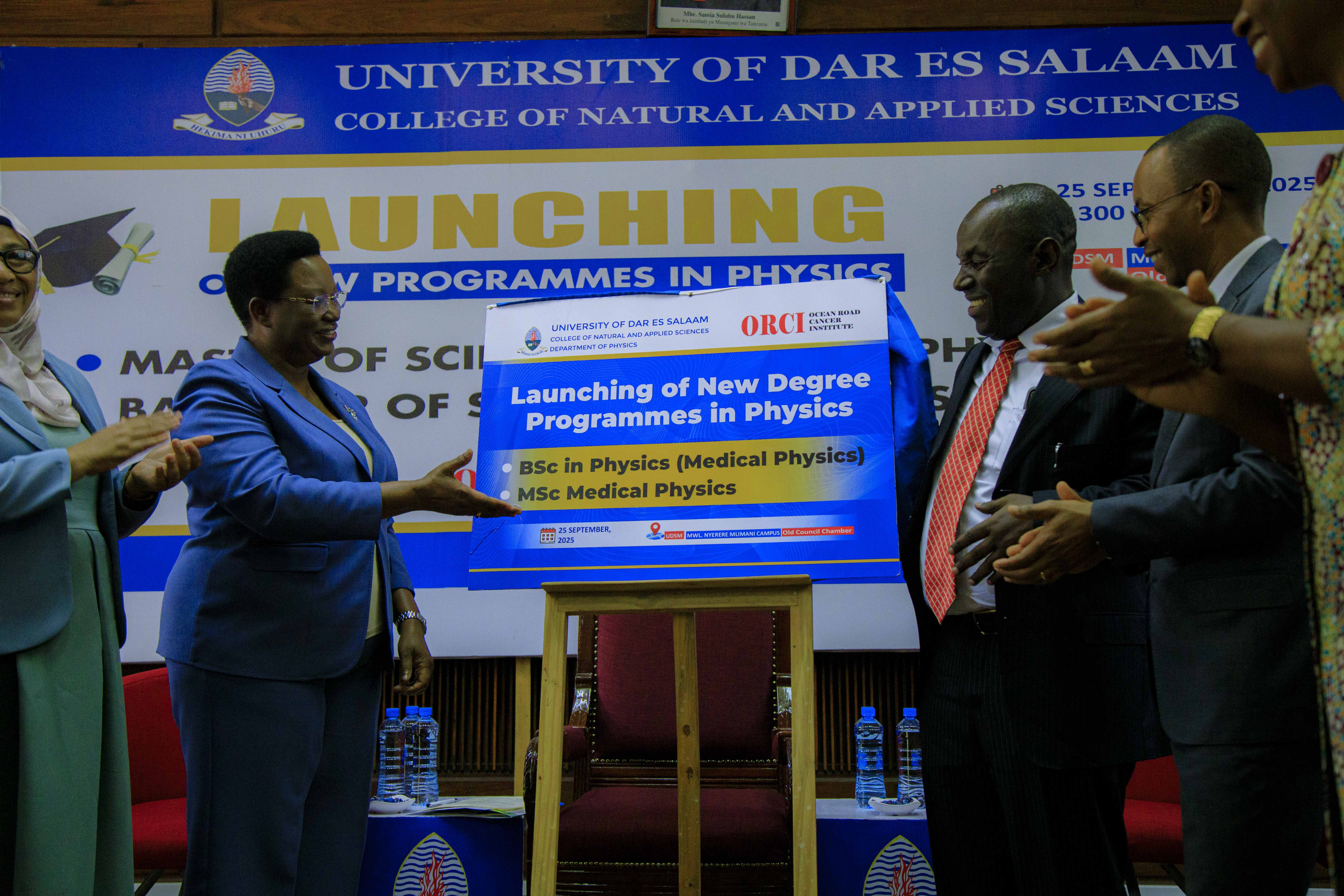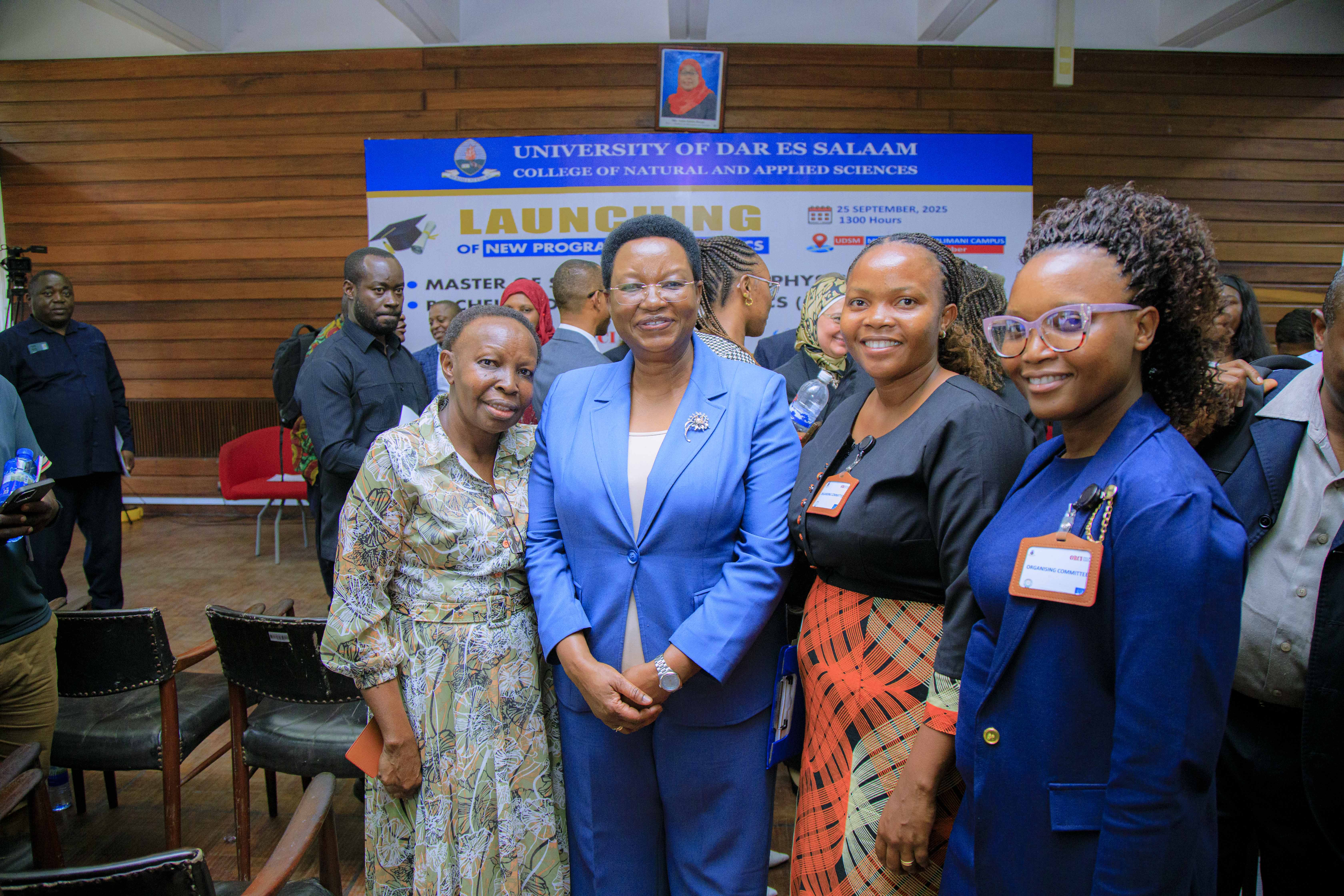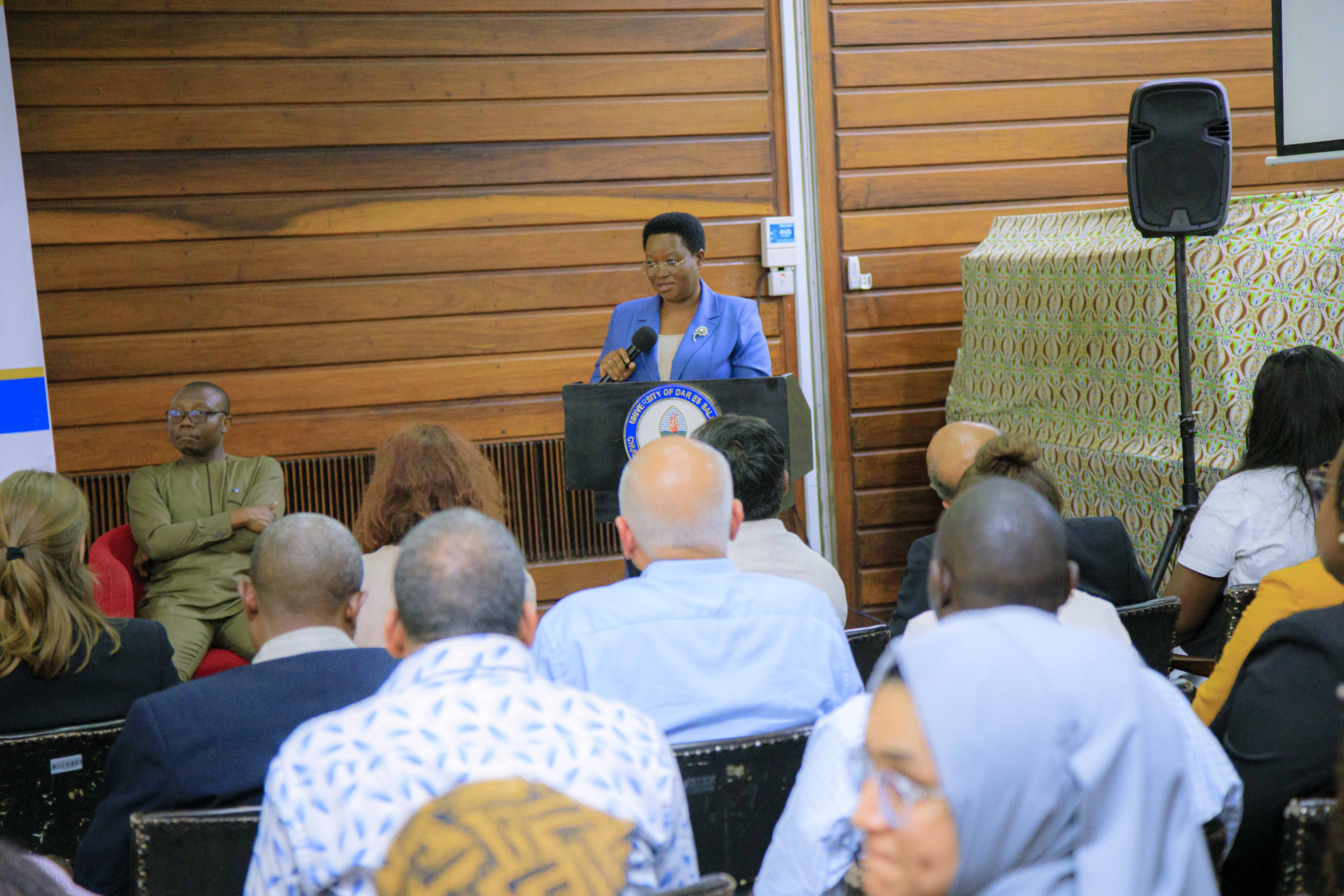Prof. Nombo Urges More Students to Pursue Medical Physics as Nuclear Medicine Programme Launches
By Ally Mambele, CMU
The University of Dar es Salaam (UDSM) has launched a specialised Nuclear Medicine Training Programme aimed at addressing Tanzania’s acute shortage of medical physicists and strengthening national capacity in the use of advanced nuclear technology for healthcare.
Speaking during the official launch held at the UDSM Confucius Multipurpose Hall, the Permanent Secretary in the Ministry of Education, Science and Technology, Prof. Carolyne Nombo, underscored the urgency of training more professionals in this critical field.
She described medical physics as an underutilised but essential discipline that is central to radiotherapy, diagnostic radiology, and nuclear medicine imaging.
“Despite the government’s heavy investment in modern equipment, the number of qualified medical physicists in Tanzania remains extremely low,” Prof. Nombo said.
She added: “At present, the country has only 12 medical physicists, yet every radiation centre requires at least one. This programme was introduced to ensure that Tanzania develops its own experts locally rather than relying solely on training abroad”.
The newly accredited programmes, a Master of Science in Medical Physics and a Bachelor of Science in Physics (Medical Physics), were developed by UDSM in collaboration with the Ocean Road Cancer Institute (ORCI), the Tanzania Atomic Energy Commission, and the International Atomic Energy Agency (IAEA).
The MSc programme is structured over three years, combining coursework, clinical residency at ORCI, and research, with graduates required to pass a professional board examination for registration. The BSc programme will provide both theoretical and practical training, including 16 weeks of hospital-based internships.
Prof. Nombo further highlighted that the government has recently expanded radiological services nationwide, installing 32 CT scanners, 5 MRI machines, 2 linear accelerators, 3 cobalt-60 units, a PET-CT, and a cyclotron between 2023 and 2025.
“However, the shortage of specialists means that critical tasks such as quality control and radiation safety are often left to engineers rather than qualified physicists, which compromises international safety standards”, she said.
She praised the support of the IAEA, which has trained most of Tanzania’s existing medical physicists abroad and provided essential equipment, curricula development, and quality assurance tools. She urged continued international collaboration to sustain the programme through training fellowships and provision of advanced teaching resources.
Attracting students from across East Africa
Already, 20 students have been admitted to the undergraduate programme, while seven have enrolled for postgraduate studies. Beyond serving Tanzania, the programme is expected to attract students from across East Africa, positioning the country as a regional hub for nuclear medicine education.
“This initiative is not just about strengthening healthcare services; it is about securing the future of cancer treatment and diagnostic imaging in Tanzania and beyond,” Prof. Nombo affirmed. “I urge more young people to join this programme and contribute to saving lives through science.”
UDSM Deputy Vice-Chancellor for Research, Prof. Nelson Boniface, speaking on behalf of the Vice-Chancellor, Prof. William A. L. Anangisye, emphasised that the programmes bridge the gap between pure physics and applied medical treatment, particularly in cancer care. “Students will not only learn theory but will also undergo extensive practical training with state-of-the-art equipment at ORCI.”
